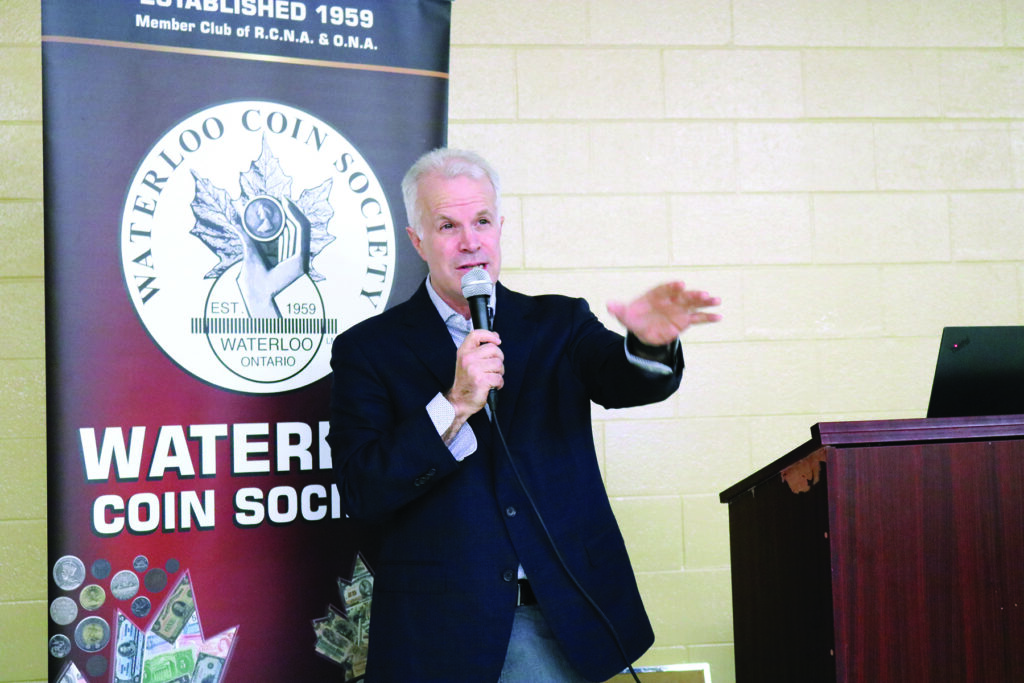This is the first story in a multi-part series exploring the Bank of Canada’s National Currency Collection.
Created in the mid-20th century to preserve Canada’s banking and financial history, the National Currency Collection (NCC) takes an egalitarian approach to its holdings, which include more than 130,000 artifacts from around the world.
The NCC received its mandate in 1962 – three years after its creation by the Bank of Canada – to create the most comprehensive collection of Canadian coins, tokens and banknotes. Its directive eventually expanded to include foreign currency, and bank officials officially designated the collection as the NCC in 1977. By 1980, it served as the foundation for the newly opened Currency Museum (now known as the Bank of Canada Museum).
“This fantastic collection that we have as Canadians isn’t a private collection,” said NCC curator David Bergeron, who’s also a Fellow of the Canadian Numismatic Research Society. “This is everyone’s collection; I’ve just had the privilege, for the past 25 years, to take care of it. Anybody can come and see it, marvel at it, cherish it, research it – do whatever you need to do.”
The NCC, to which the Bank of Canada Museum owes its existence, is “Canada’s official currency collection under the custody and curatorship of the Bank of Canada,” Bergeron added. Spanning 4,000 years, about 1,400 artifacts are publicly displayed alongside interactive exhibits at the museum, where visitors can also request access to the rest of the NCC free of charge.
“It continues to grow,” said Bergeron, who added about a third of the pieces have Canadian origins while the remaining two thirds are foreign, including ancient and medieval material.
Among the Canadian material, Bergeron noted the NCC holds 6,000 coins, patterns and specimens; 5,800 Bank of Canada notes, specimens, proofs and trials; 5,200 private chartered banknotes and Dominion of Canada notes; and 20,000 tokens.
“It’s a pretty substantial collection.”
CANADA’S ECONOMY
BEFORE THE BANK
The Bank of Canada owes its existence to the Royal Commission on Banking and Currency, also known as the Macmillan Commission, a formal public inquiry tasked in 1933 with reviewing the government’s involvement in monetary policy.
That July, prime minister R.B. Bennett’s Conservative government formed the commission, chaired by Hugh Macmillan, “a pro-central banking British jurist,” according to Bergeron. Macmillan was joined by four other members, including a Bank of England official, a former Alberta premier and two Canadian bankers.
“After only seven weeks of testimony and hearings across the country, the commission came out three to two in favour of establishing a central bank, with the two Canadian bankers opposed to establishing a central bank,” said Bergeron.
Debate ensued surrounding the Bank of Canada’s ownership, which was originally public rather than private.
Prime minister William Lyon Mackenzie King, who succeeded Bennett, nationalized the Bank of Canada in 1938.
“The minister of finance became, and still is, the de facto owner of the Bank of Canada,” Bergeron said.
Before the central bank’s establishment, Canada “had little in the way of an act of monetary policy,” he added.
To read the full story and others in this issue, click here and subscribe now.
Already a subscriber? Click here to continue reading in the digital format.

